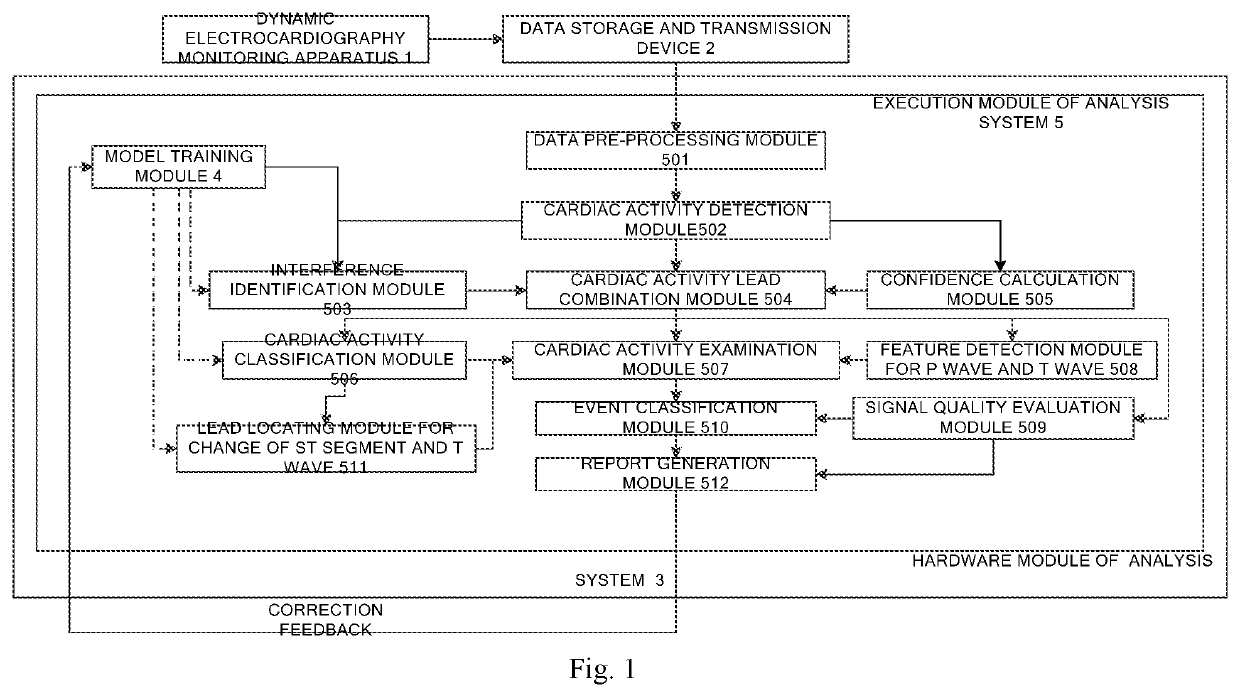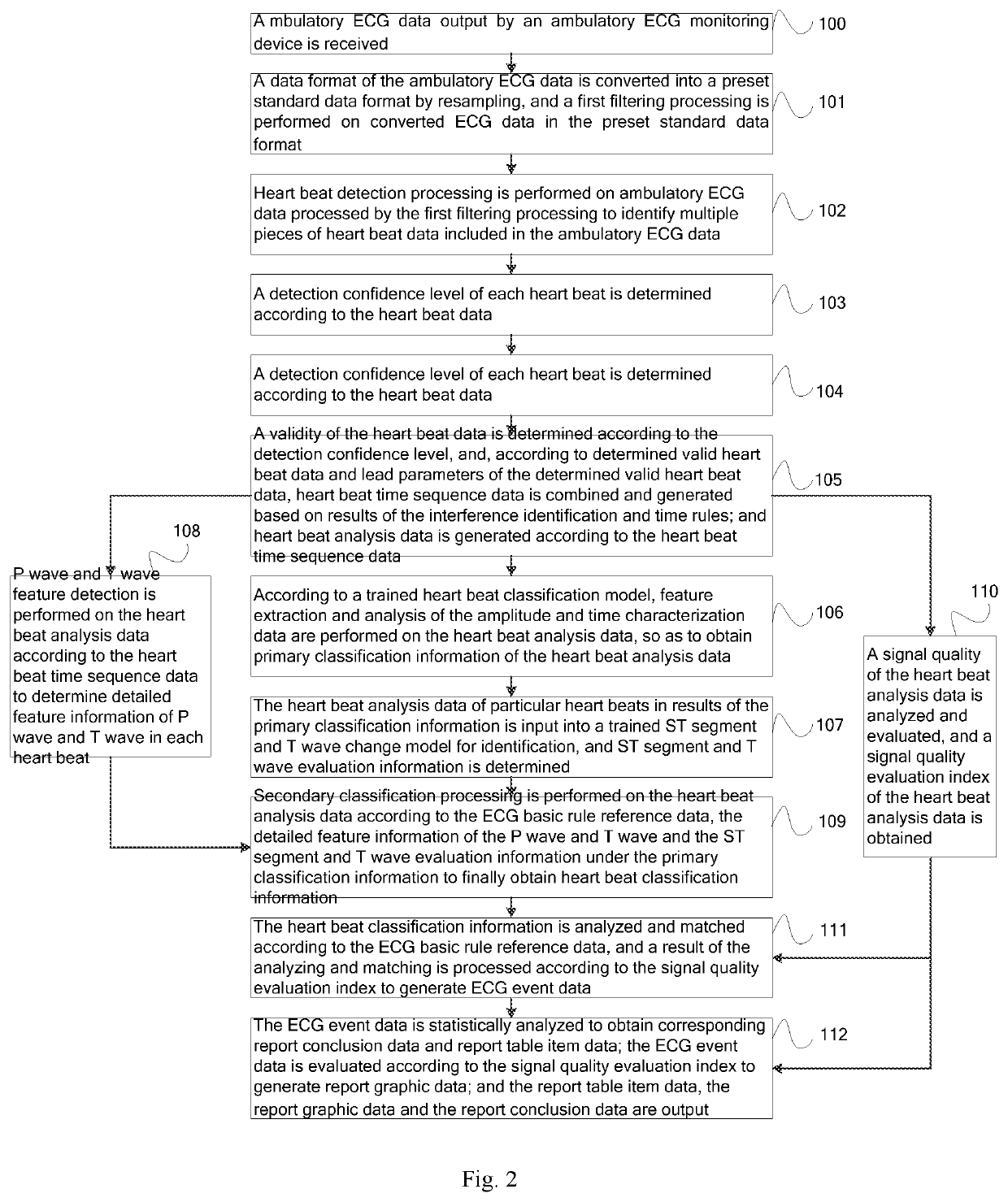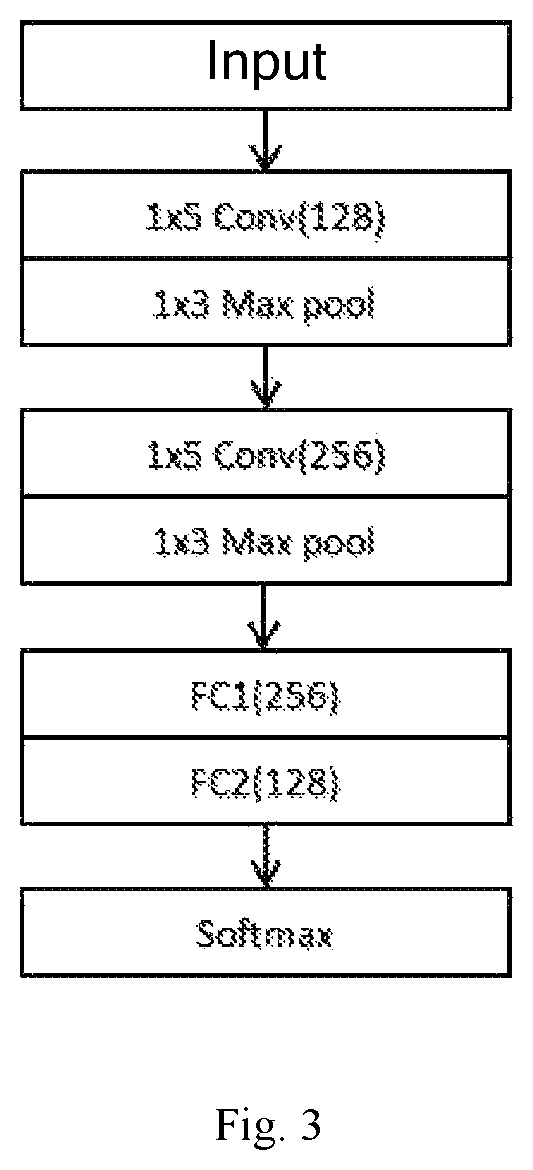Method and device for self-learning dynamic electrocardiography analysis employing artificial intelligence
a dynamic electrocardiography and artificial intelligence technology, applied in the field of artificial intelligence data analysis, can solve the problems of easy interference, poor anti-interference ability, and inability to accurately identify p and t in the feature extraction of the heart bea
- Summary
- Abstract
- Description
- Claims
- Application Information
AI Technical Summary
Benefits of technology
Problems solved by technology
Method used
Image
Examples
Embodiment Construction
[0074]Technical solutions of the present disclosure will be further described in detail below through accompanying drawings and embodiments.
[0075]In order to facilitate understanding of the technical solutions of the present disclosure, basic principles of artificial intelligence models, especially convolutional neural network models, are first introduced.
[0076]Artificial intelligence Convolutional Neural Network (CNN) model is a supervised learning method in deep learning, which is a multi-layer network (hidden layer) connection structure that simulates a neural network. An input signal sequentially passes through each hidden layer, in which a series of complex mathematical processes (Convolution, Pooling, Regularization, prevention of over-fitting, Dropout, Activation, and general use of Rectified Linear Unit activation function) are carried out. Some features of an object to be identified are automatically abstracted layer by layer, these features are transmitted as input to a hi...
PUM
 Login to View More
Login to View More Abstract
Description
Claims
Application Information
 Login to View More
Login to View More - R&D
- Intellectual Property
- Life Sciences
- Materials
- Tech Scout
- Unparalleled Data Quality
- Higher Quality Content
- 60% Fewer Hallucinations
Browse by: Latest US Patents, China's latest patents, Technical Efficacy Thesaurus, Application Domain, Technology Topic, Popular Technical Reports.
© 2025 PatSnap. All rights reserved.Legal|Privacy policy|Modern Slavery Act Transparency Statement|Sitemap|About US| Contact US: help@patsnap.com



